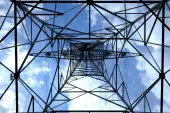Handcuffs or handrails?: Philippine limits on FiTs
By William Byun & Marilia ParaschouWith a growing population projected to reach 100 million and a sustained economic boom, the need for new power generation in the Philippines is as obvious as the threats of blackouts.
In addition to an ambitious bulk steel-in-the-ground target to triple installed capacity by 2030, the Philippines has also tried to upgrade its economic efficiency model via a Retail Competition and Open Access Scheme (RCOA) introduced in mid-2013 to increase competition amongst electricity producers and lower prices for end-users.
As Cubs baseball great (and optimist) Ernie Banks said, "It's a great day for a ball game; let's play two!" Bundling renewables policies though, may be an altogether different ball game.
On its face, also coupling renewable energy capacity increases may seem like a no-brainer. Instead of importing expensive fuel, why not just take advantage of the huge renewables potential from biomass, solar, geothermal, hydro, etc. specifically abundant in the country?
Also, the smaller capacity sizes which betwixt renewables otherwise, may just be the right fit for an archipelagic country like the Philippines where big baseload centers may pose its own distribution challenges across the various island demand centers. Finally, on top of that, civil society et al loves renewables.
On its surface, looking at the track record of the Philippines with renewables, it is a success story with actual installed capacity ranging widely across biomass to geothermal to pig manure gas to tidal and so forth.
Just below that headline though, much of such installation took place under a gun when the critical shortfall of capacity resulted in fast and generous approvals and tariffs for any capacity – any and all capacity.
In line with other tried and tested national renewables policies, the long anticipated Philippines policy centers around new Feed-In Tariff (FiTs) Rates for Hydropower, Biomass, Wind, and Solar Energy Projects rolled out in 2013.
The tariffs will be paid for renewables plants under 20-year agreements and in turn, the FiTs payments will be recovered by the end-consumers as a new FiT-Charge applied to electricity bills.
FiTs are not new, and many countries have successfully grown renewables using such programs. For example, the VSPP program in Thailand has seen over 1850 MW of new renewables capacity under a relatively straightforward PPA and grid connection system.
While there may be as many exceptions as there are unique factors affecting the success of a program to expand installed renewables capacity across different countries, one cautionary note from the Philippine program may be its bundling into the policy mix capacity caps.
Ostensibly to bring such renewables capacity growth along a more orderly (and competitive/cheaper priced) pathway, the Philippines’ renewables policy also introduced an additional twist in set “Installation Targets” which award FiTs on a ‘first-come-first-served’ basis quota cap set every three years.
Once enough projects are approved to meet the Installation Target of a certain three-year period, no new FITs will be provided for that period. Interested parties will need to apply at the beginning of the next period. Plants outside the FiT scheme will need to sell their output at market prices (which for renewables, living by FiTs, means simply “no go”).
For the first three years, the Philippine government announced Installation Targets of 250MW for Hydropower and Biomass, 200 MW for Wind Power, and 50MW for Solar Energy plants. In terms of economic theory, the policy aims to encourage the quick and efficient development of renewable energy plants as IPP competition should encourage a rush to build and invest.
However, practically, given the commercial size of most projects, these caps means that a handful of projects at most would be eligible per period.
Such a Installation Target barrier bluntly draws a line that a time risk also exists that a corporate developer strategy of having a rolling development of plants may not work but rather, a land grab rush approach (with a heavily front-load weighted risk) would also need to be pursued.
Worrying too is that the existence of an FiT prop itself clearly means that renewables are as yet, not entirely independently competitive, and the existence or not of an applicable FiT is not an enhancement, but rather a stark threshold line of a profitable long-term revenue stream, or a flat-out ab initio bankruptcy position.
Therefore, Installation Targets add not just an element of additional and graduated step-wise risk but rather, a brightline cutoff of total and catastrophic project and investment risk. The bundling of policies to promote more interest may then actually mean that a successful volume of interest could in turn kill off the likelihood of success itself.
Sadly for the above-noted bundling enthusiast Mr. Banks, his team, the Chicago Cubs, haven’t won a championship for over 100 years plus either.
In practice, the experience of other countries with a much narrower quota such as the Korean solar program in the mid 2000s or the current Malaysian solar program which thinly slice the applicable Fit pie into tiers of even less than 1 MW, add a layer of transactional cost and risk assessment complexity which unfortunately trump considerations of commercial viability.
The Thai VSPP program had more generous capacity quotas (for example over 780 for solar, etc.) and as a result, left more room for the various smaller renewables developments to proceed apace since multiple projects could attain approval.
Overall, the introduction of the Philippine FiT program is a very welcome development to help clarify the commercial framework for renewables development and developers are clearly exploring the huge potential in the country.
However, as such demand may in turn lead to a quick chokepoint at such Installation Targets, there may well be a need to consider expanding the Installation Targets should there be a successful uptake of interest and applications for the FiTs.




















 Advertise
Advertise







